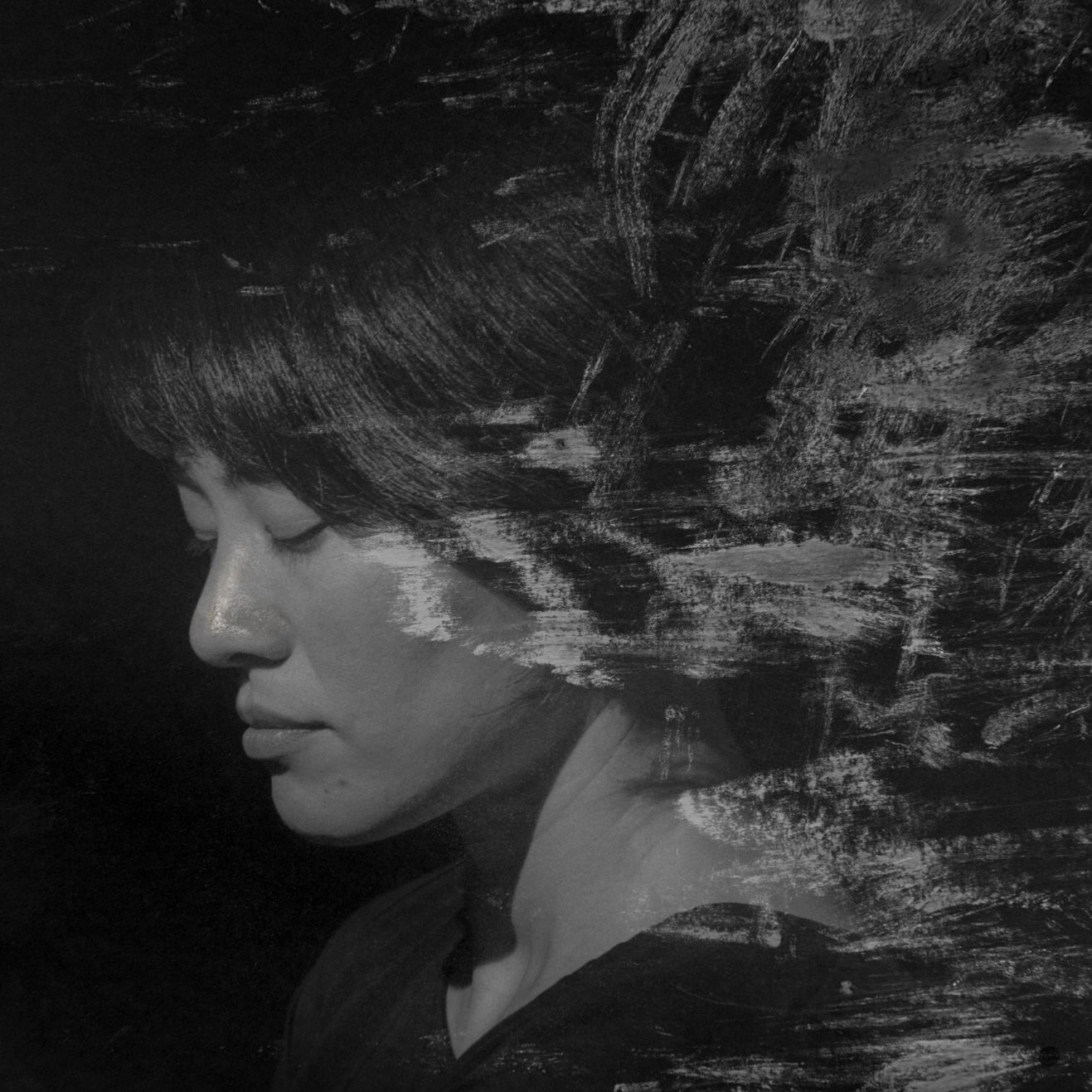
We wanted to learn more about Mayumi Suzuki and the reasons behind her project The Restoration Will.
The 87 handmade edition, made after the Photobook as an Object Workshop at RPS in 2016, sold out quickly, the project earned international recognition, and finally was the winner of the 2017 PhotoBoox Award.
Read our interview with Mayumi below, and pre-order a copy of the book or the special or limited edition HERE.
The award ceremony will be held on November 25th, during the main weekend of the Photolux Festival.
The Restoration Will might provoke, in someone approaching it for the first time, a sense of existential loss for the immense devastation that an earthquake and a tsunami carry with them. However, the final message you want to communicate is completely different, it is in the title itself. What are your memories of that day, of March 11th, 2011? What has changed for you personally and as a photographer?
Some readers might feel sense of loss, others might perceive something heartwarming. What I want to share with everyone is not the memory of the tragic Tsunami, but the “mental restoration” one may experience after a devastating event. I also wish this book to be shared with those who harbor sorrow/grief within. Anyone experiences painful events in their lives. For me, March 11th, 2011, the day of the giant Tsunami, was the memorable day in my life.
Two weeks after the Tsunami, I went back to my home and picked up my fathers belongings in the rubbles. My parents must have died in deep regret. I thought I should make a mark of my parents’ lives and of my father’s life as a photographer. It became my attempt at restoration. It was my father’s will, and mine too.
Your father’s camera, found after the tsunami, has received a second life in your hands, and seems to be the legacy of your parents. Just like the dark room that was able to withstand the complete collapse of the house. What is their story before being buried by rubble?
The darkroom was the place of memories of my father and I. It was also the starting point of my career as a photographer. I was about 5 years old when my father started taking me into the darkroom and showed me the attractions of photography. I remember the moment when images floated up in the developer, and the acidic smell. I was so enchanted by my father’s printing works and even forgot about mealtime. In that darkroom I also helped him with printing and I printed the portrait series of the shipwrights from 2004 to 2005, after I graduated from a photo college.
The 16 meter high Tsunami destroyed all the houses in the area. It was so high and powerful enough to push a car into the third floor of a building. But our darkroom withstood in such Tsunami. I think my parents’ spirits really wanted to protect the darkroom as the symbol of their photo studio.
You compare the scars in the found photos to your faded memories. Does seeing those pictures of when you were a child, and those of your father’s portfolio, re-composed in a book, help to recover your distant memories?
Yes, it was very helpful. Before I started making this book, I was trying to give up all the memories from the past in order to get away from reality, which was too painful to confront. I stored away those found cameras, lenses, and the snapshots in my closet for five years until I started this project. Those things reminded me of the Tsunami, and I did not want to feel emotional for I would be immersed in the memories of my family.
To tackle this project, I took out the snapshots my father made. They were damaged in seawater and the layers of color were partially lost/reacted to seawater. The damages resembled the scars in my mind, and the damages my hometown suffered. I saw a possibility of giving depth to the story by utilizing those photos. As a result, I feel my mind could recover through making this book.
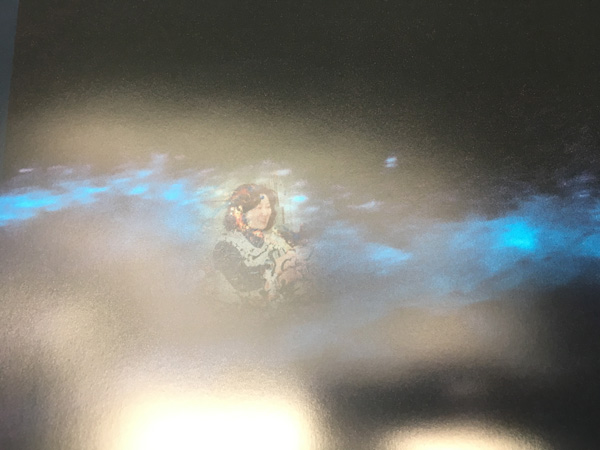
What kind of relationship do you have with the sea, with water, today?
Despite the experience of the Tsunami, I still love the sea, because I was born and raised in the fisher town. Whenever I see that beautiful coast of my home, I can feel my parents near me. Some people who ware struck by the Tsunami could not see the sea for some time (a sort of trauma, I presume), yet, as Japanese we worship nature, we have the mentality of accepting any event caused by nature, even a Tsunami. While the sea could be a threat, it is also a blessing of nature. Our lives depend on what the sea provides; a place for fishery.
In my book, there is a page with blue waves. Actually, these images were not taken in my town, but I shot them while I was on a fishing boat offshore of Izu Peninsula in Shizuoka prefecture, 600 km away from my home. The moment when I saw the blue light emitted from the noctiluca, it seemed to me that the spirits of the deceased were floating there. In fact, the missing victims, including my parents, were still resting at the bottom of the sea, and I thought it could be possible that they had drifted there.
In which way the Japanese publishing tradition has influenced your photography work?
Actually, I don’t have much influence from the traditional Japanese photobooks. It is true that many beautifully produced books are published in Japan, but photography itself clearly differs from the context of European photography. Honestly speaking, I was not interested in traditional Japanese photography.
In recent years, photographers are making photobooks with multiple layers to enable storytelling. I became interested in that type of photobooks. It was Yumi Goto (independent curator, Reminders Photography Stronghold) who triggered me to make this book.
What was the reason why you decided to transform your photographic project into a book?
My story could not be expressed only by editing the images as a narrative. I was thinking about the reasons why I wanted to restore what my father left, why I wanted to express the world of the deceased using my father’s lens, and why I wanted to share my story with the world. And I came to the conclusion that a book could form a shape for the complexity of an invisible story. My liking the physicality of books was also simply one of the reasons.
One has to go somewhere to see an exhibition. Showing photos online is possible, but it has a technical limit. On the other hand, as one flips through the pages of a book, they can enjoy the feel of paper, the rhythm of the pages, the changing of one's own emotions. A photobook can also be spread all around the world, too. For these reasons, I have chosen the photobook as a way to express myself.
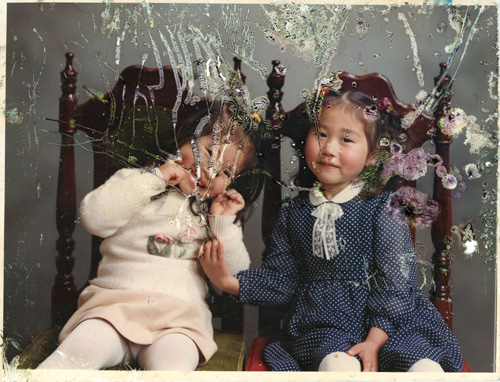 By your opinion what’s the value added to a photographer work when choosing a book form?
By your opinion what’s the value added to a photographer work when choosing a book form?
These days, not only can anyone take photos, but they can also show them online. In such time, besides photographing, a photographer has to pursue more elevated “expressions.” That’s what I believe. One can claim oneself as a photographer only when one has this value-added manner of expression.
The value of bookmaking is that a photographer can fully visualize their ideas. One might have to give up what they wanted to do for an exhibition due to budget or limit of space. But a book can enable the ideas relatively easily and economically. A book can be the most effective tool to photographically construct stories one wants to communicate.
Do you know the Lieko Shiga's work Rasen Kaigan (Spiral Shore) and if yes, what do you think about it? In 2015, this work has taken part of a collective exhibition In the wake: Japanese Photographers Responds to 3/11, presented for the first time to explore the photographic response to these tragic events and also to interpret the overarching significance of the tragedy through art.
Do you know these projects? If yes, do you consider them as a source of inspiration for the evolution of your work?
Of course I know the work "Rasen Kaigan." Shiga, the photographer, moved to Natori, Miyagi prefecture, before the earthquaque. Her work is the fruit of the excellent collaboration with locals.
There are many photographers who worked on the theme of 3/11, and I heard that the photo exhibition in Boston on 3/11 attracted a lot of audience. This shows that 3/11, a natural disaster, became the center of attention all over the world. Because I couldn’t think of anything but my home (I didn’t even have much room in my head to think about the Fukushima nuclear power plant), I was never really able to see what other photographers were busy with. Yet, every time I saw the images taken in that area, I felt that the disaster stricken areas were being consumed.
I think there are not many native photographers, born and raised in the area, working on photo projects there after the disaster. Naoya Hatakeyama is a well known photographer from the area, and just like myself, he lost his family, and his hometown was destroyed too. What would be the meaning of photographing home for us, the native photographers who survived the disaster? I believe it’s our mission to make photographic images that strongly appeal to people, not to be consumed.
It has been six and a half years since the earthquaque. How is our state of mind now? The buildings have been rebuilt, and everything appears as if they have fully recovered. There are more and more art works in search of (and/or to express) an inner psychological world. Those works are not limited to photography, but it could be literature, film or theater. Whatever the medium is, the audience is also seeking something to believe in, I guess. My book “The Restoration Will” falls into that very need.
(Translation: Miyuki Okuyama. Interview: Enrico Stefanelli, Chiara Ruberti, Benedetta Donato and ceiba)
地震と津波が引き起こした莫大な被害による存在の喪失の感覚を持つ「The Restoration Will」は、この本を初めて手に取る人にとって、刺激になるかもしれません。しかし、あなたが伝えたい最大のメッセージは全く異なっていて、それはタイトルが表しています。2011年3月11日のあなたの記憶はなんですか。個人として、また写真家として変化したことはなんですか。
読み手の中には喪失感を抱く人もいれば、温かい何かを得る人もいるでしょう。私がこの本を通じてみなさんと共有したいことは、津波の悲劇そのものではなく、その後に体感するであろう「心の復興」についてです。さらに心に悲しみ/痛み(グリーフ)を抱えた方と分かち合える本になればいいと願っています。生きていれば誰でも辛い出来事のひとつやふたつあるでしょう。2011年3月11日、つまり大津波があった日は、私の人生において大きな日であったということです。
二週間後に故郷へ戻り、私は瓦礫の中から父の遺品を拾い集めました。両親はどんな悔しい思いで死んでいったのか。両親の生きた証、写真家としての父の証を残してあげたいと私は考えました。そのために復元を試みたのです。それが父の遺志であり、それを達成するのが私の意志でした。
津波の後にあなたのお父さんのカメラが見つかり、それはあたなの手によって2度目の命をあたえられましたね。このカメラはあなたの両親の遺品のようでもあります。また、家がすべて倒壊したなかに残っていた暗室のようでもあります。カメラと暗室が瓦礫に埋もれてしまう前のなにかエピソードはありますか。
暗室は私と父の思い出の場所であり、写真家としての私の原点です。5歳くらいから一緒に暗室に入り、私に写真の魅力を教えてくれた場所でした。現像液から画像が浮かび上がる瞬間、酢酸の匂い、幼い私は食事をする時間を忘れるくらいに、父のプリント作業に魅了されました。また私が写真カレッジを卒業した後、2004〜2005年にかけて父のプリントを手伝い、船大工のポートレートを仕上げた場所でもありました。
16mの津波によって全ての家が破壊され、ビルの3階に自動車が突っ込んでいるような状況で、我が家の暗室だけが残っていました。写真館のシンボルとして、両親の魂が守りたかったのだろうと思います。
あなたは見つけた写真の傷みと自分の失われた記憶を比較していますね。自分の子どもの頃の写真やあなたのお父さんのポートフォリオのなかの写真を見ること、そしてそれを本のなかに再構築することは、遠い記憶を取り戻す助けになりましたか。
はい、それはとても助けになりました。この本を作るまでは、私は辛すぎる現実から逃げるために、過去の記憶のすべてを捨て去ろうとしていました。このプロジェクトを始めるまでは、拾って来たカメラやレンズ、スナップ写真は、5年間クローゼットにしまい込んだままだったのです。津波のことを思い出してしまうし、家族との思い出に浸って感傷的になりたくなかったからです。
このプロジェクトに真剣に向き合うために、父の撮ってくれたスナップ写真をクローゼットから出してきました。スナップは海水で傷つき、色が剥がれていました。それは私が負った心の傷にも似ているし、町が受けたダメージのようにも見えました。これらを用いることによって、作品としての物語に深みを与えることができるのではないかと発見しました。結果として、本を作り上げることで私の心も回復されたと感じています。
今、あなたと海、そして水との関係はどのようなものですか。
生まれた時から漁業の町で暮らしているので、大津波の後であっても私は海を愛しています。美しいふるさとの海岸線を見る度に、私は両親を近くに感じることができるからです。被災した人の中には、しばらく海を見ることができなかったという人もいますが(一種のトラウマですね)、自然を崇拝する日本人の考え方としては、自然が引き起こすものならば大津波ですら受け入れようとする精神があります。海は脅威でもありますが、同時に自然の恵みつまり漁業の場をもたらしてくれ、そのおかげで私たちの生活ができるのですから。
本の中に青い波のページがあります。これは私の故郷ではなく、600kmも離れた静岡県伊豆半島の沖合で漁船に乗っている時に撮ったものですが、夜光虫の青い光を見た瞬間、死者の魂が漂っているように感じました。実際に(私の両親も含め)行方不明の人たちがまだ海の底で眠っていますし、もしかすると流れ着くことも可能だろうということを、私に思い起こさせました。
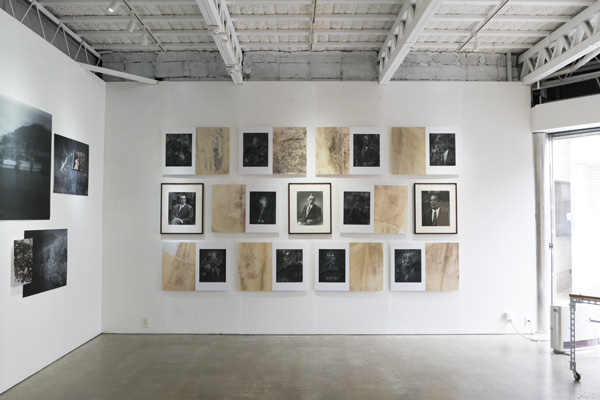 あなたの写真作品は、日本の出版の伝統からどのような影響を受けていますか。
あなたの写真作品は、日本の出版の伝統からどのような影響を受けていますか。
正直なところ、日本の伝統的な写真集からあまり影響を受けていません。日本では美しい印刷の本がたくさんあるのも事実ですが、写真そのものが欧米の文脈(コンテクスト)と比べると明らかに違いがあります。私が興味を引かれるものは日本の伝統的な写真にはありませんでした。
ここ近年になって、新しいドキュメンタリーの手法として、数々のレイヤーを重ねたストーリーテリングの写真集が作られるようになって、それから私は写真集に興味を持つようになりました。そのきっかけを私に与えてくれたのは後藤由美さん(Reminders Photography Stronghold)でした。
写真のプロジェクトを本にしようと決めた理由はなんですか。
私の物語は、写真をナラティブに並べるだけでは伝わりきらない物語でした。なぜ父の遺こしたものを復元したいのか、なぜ父のレンズを使って死者の世界を表現したいのか、それをなぜ世界中の人々とシェアしたいのか。見えない物語の複雑さを形にして伝えることができるのが本だという結論に達しました。単純に本という物体が好きなのも理由の一つです。
展示であればその場に行かないと見られませんし、ウェブを使って写真を見せることも可能ですがテクニカルな部分で限界があります。ですが本の場合は、めくった紙の感触、めくる間(タイミング)、読者の感情の動き、それらは読者ひとりひとりに委ねることができるし、世界中の人々に手に取ってもらうことも可能です。こうした理由から本という表現方法を私は選びました。
写真家が本という手法を選んだ場合に与えられる価値というのは何でしょう。あなたの意見を聞かせてください。
今や誰でも写真が撮ることができ、しかもネット上で発表できる環境になった時代に、写真家は撮るだけではなく、さらなる「表現」を追求しなくてはならない時代であると私は考えています。その付加価値を持ってこそ写真家だと思います。
本を作る価値は写真家のアイディアを100%視覚化できることにあります。展示プランであれば予算や壁の大きさによって、やりたかったことを諦めるときもありますが、本であればもっと簡単に安価にアイディアを再現できるでしょう。自分の伝えたい物語を写真で構築できる、最も有効なツールであると言えます。
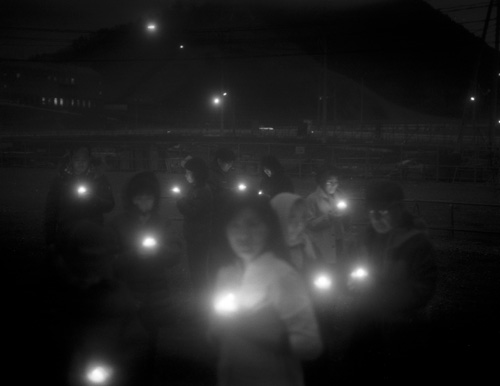 志賀理江子の「螺旋海岸」を知っていますか。知っていたら、この作品をどう思いますか。2015年、この作品は「In the wake: Japanese Photographers Responds to 3/11」というグループ展で展示されました。これはあの悲劇的な出来事に対する写真での反応として、また悲劇の包括的な意味をアートを通して解釈するため初めて展示されたものです。
志賀理江子の「螺旋海岸」を知っていますか。知っていたら、この作品をどう思いますか。2015年、この作品は「In the wake: Japanese Photographers Responds to 3/11」というグループ展で展示されました。これはあの悲劇的な出来事に対する写真での反応として、また悲劇の包括的な意味をアートを通して解釈するため初めて展示されたものです。
http://www.mfa.org/exhibitions/in-the-wake
これらをあなたの作品が発展するためのインスピレーションの源だと思いますか。
もちろん、螺旋海岸は知っています。志賀さんは震災前に宮城県名取市に移住した写真家で、彼女の作品は住民との素晴らしいコラボレーションですね。
3/11を題材としている写真家はたくさんいて、ボストンで行われた写真展も大盛況だったと聞きます。それだけ3/11という自然災害が世界中で注目されたことを意味します。
私の意識は故郷にしか向いていなかったので(福島原発のことでさえ考える余地がありませんでした)、他の写真家が何を撮っているのか、あまり気にする余裕がありませんでしたが、多くのメディアでその地域で撮られた写真を目にする度に「被災地が消費されている」と感じていました。
(生まれも育ちもという意味で)ネイティブな人間で、かつ震災後の故郷を撮っている写真家はあまり多くないと思います。畠山直哉さんが有名ですが、彼もまた私と同様に家族を失い故郷が破壊された経験をお持ちです。生き残こった私たちが、ネイティブとして故郷を撮る意味は何でしょうか。消費される写真ではなく、もっと心に届く作品にしていかなければならない使命感を私は持っています。
震災から6年半が経ち、私たちの心はどうでしょう。建物が再生され、すべて復活しているように見えますが、今日では、目に見えない精神世界を求める(表現する)作品が多くなってきたと思います。それは写真だけではなく、文学であったり、映画や舞台であったりもしますが、どういった媒体であれ心のよりどころをオーディエンスも求めているのではないかと推測しています。私のThe Restoration Willもそこに当てはまると思います。
(Translation: Miyuki Okuyama)

![]()
